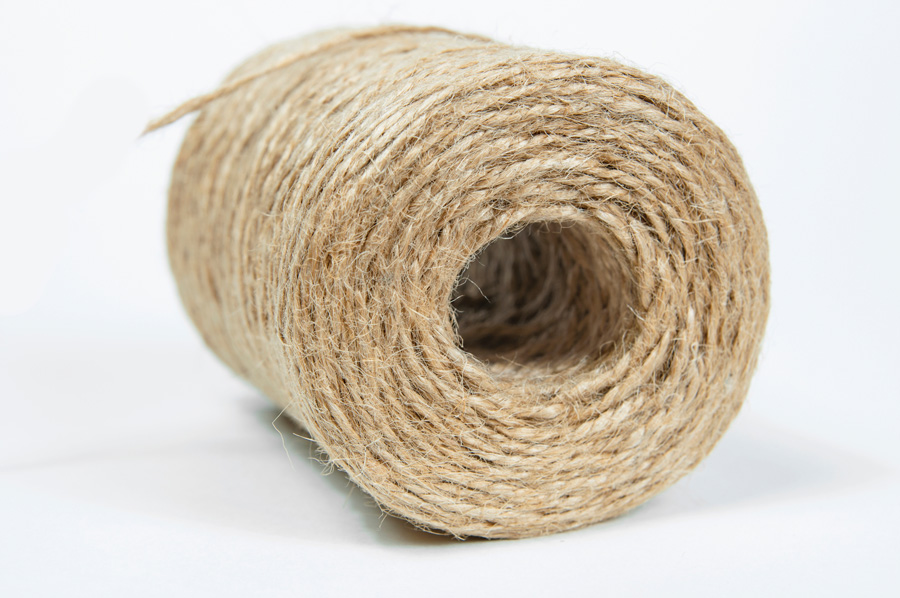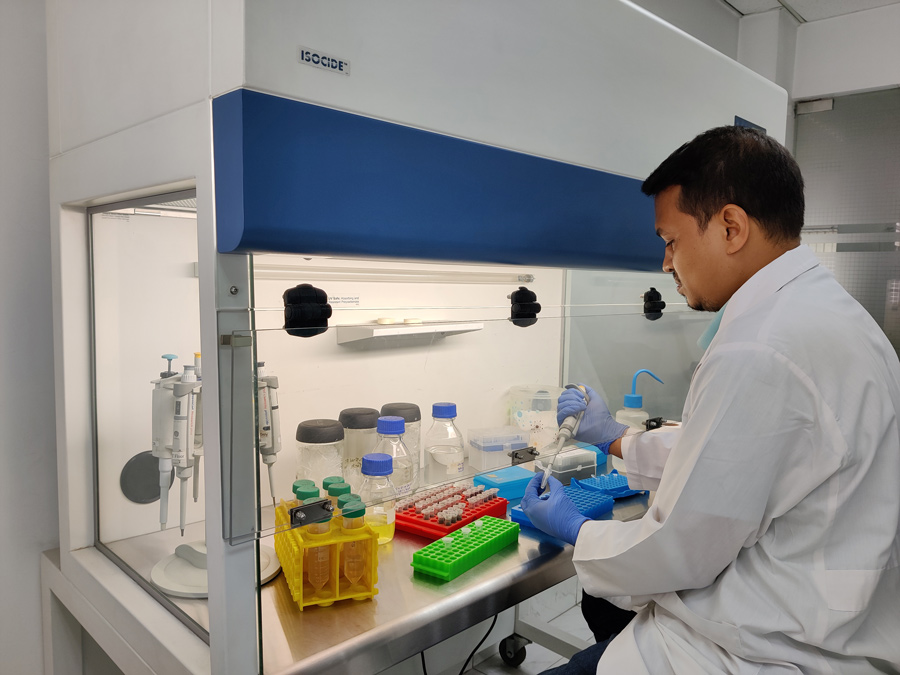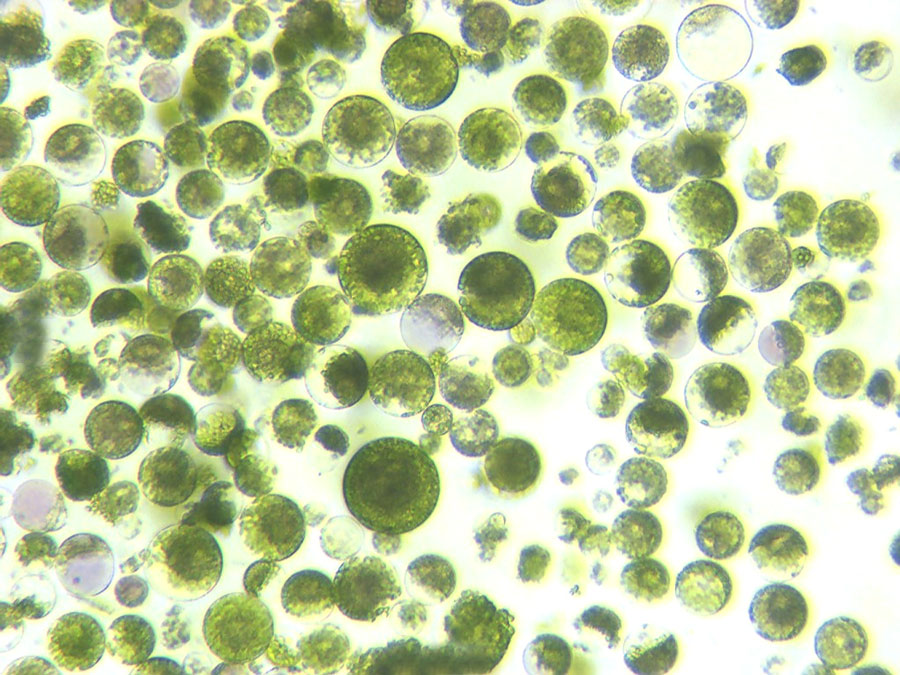Pure and sound: Isolating the finest RNA from jute
Jute is the second most important fibre crop in the world, in terms of its usage and cultivation. It is cheap, biodegradable, and the versatile fibre is used in the manufacture of various goods for packaging, construction, fabric and homeware. There is now a growing demand for jute production, which has consequentially spurred more interest in scientists to study the nature of this crop. In order to understand the behaviour of jute plants in the field, scientists perform studies at the molecular level, to explore the genes that have particular functions for specific properties of the plant. Molecular biological approaches require the use of RNA isolated from specific tissues of the plant. Given that the isolation of RNA from jute has been a challenge due to the nature of the plant, researchers of Basic and Applied Research on Jute Project at the Bangladesh Jute Research Institute have identified a novel method to isolate RNA from all jute tissues.
Sticky stuff
Just like humans, plants from different families look different and also contain varied amounts of chemical compounds in their tissues. Each plant contains millions of chemicals that allow it to survive in its own way in the environment it is growing in. Some compounds, such as mucilage, are present in higher amounts in certain families like Malvaceae, which jute belongs to. In addition to mucilage, which is made up of polysaccharides (carbohydrates), plants also contain phenolics. These compounds are present in plants so as to protect them from dehydration, as well as defences towards impending environmental stress. Although these chemicals are important for plant survival, they are not very useful for scientists who need to perform molecular studies on the plant. Given that molecular biology studies in jute are gaining importance, the presence of these compounds pose a hindrance when isolating cellular material.


Central dogma of molecular biology
Molecular biology is the study of the composition, structure and interaction of cellular molecules. It includes the study of DNA which consists of genes. The central dogma of molecular biology states that DNA contains instructions (genes) which are copied by RNA (the message) to make a protein. The protein is the business end of the cell; in other words, proteins give shape, structure and function to a cell. When DNA is copied into RNA, the instructions become a message, whereby the gene is “expressed”; this is when the cell is preparing to make the protein it needs for a specific function.
Researchers of Basic and Applied Research on Jute project at the Bangladesh Jute Research Institute have identified a novel method to isolate RNA from all jute tissues.
Expression of a gene varies between cells and tissues, and is also affected by development of an organism and its interaction with the environment. For example, specific genes might be expressed only when particular plant parts are fully developed, for example the flower or seeds. Furthermore, when the plant faces different environmental changes, gene expression could change, e.g. in response to water deficit, pathogen challenge or cold temperatures. All of these changes occur so the plant has the best chance to survive.

Important but fragile
RNA, or ribonucleic acid, is the message encoded by a gene. RNA is different in structure to DNA, in that it is single stranded and also has one different chemical (or base). RNA is located in the cytoplasm of a cell, unlike DNA which is in the nucleus. The nature of RNA is that it is very fragile once it is outside the cell, as it is prone to degradation by abundant enzymes called RNases in the environment. Therefore any technique that uses RNA needs to be performed with great care so as to avoid degradation of the sample RNA. Once RNA is degraded then it is of no use as it cannot be quantified in the given sample, nor can the expression of a particular gene be monitored.
For the expression of a gene to be studied, isolating good quality RNA, quantifying it and sequencing it is useful. RNA can be manipulated in several ways once it is obtained. For example, RNA is reverse-transcribed (i.e. changed back) to complementary DNA (cDNA) and then a particular gene can be amplified. This is useful to gauge the amount of expression of a particular gene in a specific tissue, or in response to an environmental condition. Generally, changes in expression of a gene reflects its function in a particular situation, for example in response to salt stress. However, ultimately, the amount of protein made from the RNA determines its true function in a process. In parallel to quantifying gene expression, sequencing of the RNA (RNA-seq) is a technique that allows identification of the base sequences of all expressed RNA in a given sample. This is important when there is no prior knowledge of target genes. Irrespective of the technique that the RNA is being used for, starting with good quality, pure RNA is key to making it a success.

Impediments to purity
Apart from the fragility of RNA which has to be considered when isolating it from tissues, in plants the presence of compounds such as mucilage, polyphenols and secondary metabolites pose a problem. Another challenge is that these compounds are present in different amounts in different plants, so it can be very hard to isolate RNA from some tricky plant tissues. Scientists have developed methods to remove these hindering compounds, such that high quality RNA can be obtained. In any protocol for extracting RNA, the steps involve cell lysis, DNA and protein denaturation, inactivation of RNases, and removal of other cellular components, followed by recovery of RNA. These sequential steps allow the separation of RNA from the rest of the cellular material.
One of the problems associated with RNA techniques developed for plants is that not all of them work well for all types of plant tissues. Therefore when performing a detailed analysis of gene expression in one entire plant, it is not easy to adopt several RNA techniques to isolate RNA separately from leaves, flowers, seeds and roots. What is needed is one protocol that can be used for RNA isolation from different tissues of the same plant, especially when it contains hindering compounds.
By isolating high-quality RNA from several plant tissues, this study has paved the way forward for future RNA applications.
Picking the cream of the crop
In recent developments, the Basic and Applied Research on Jute Project team have developed a single protocol for RNA isolation from different tissues (root, stem, bark, stick, leaf, flower and fruit) of field-grown jute plants. What is unique is that they have modified pre-existing protocols and incorporated reagents that removing interfering polysaccharides and phenolics from the sample tissues. The modified protocol was successful in obtaining pure RNA from diverse jute tissues, as judged by the quality of the RNA (lack of contaminating DNA, proteins and polysaccharides) as well as its use in downstream applications. The authors were successful in using the RNA to synthesise cDNA, amplifying specific genes, as well as in next generation sequencing methods, such as RNA-seq. Importantly, the team were also successful in using this technique to isolate RNA from other plants in the Malvaceae family. Therefore, by isolating high-quality RNA from several plant tissues, this study has paved the way forward for future RNA applications.

Personal Response
How long did it take to develop this technique?
<> It was not that easy to fix the procedure to isolate top quality RNA using a single protocol as different parts contain different amount of mucilage content. We had to tune each of the key components present in then existing isolation buffer and to observe the effect of the every change separately. Furthermore, we added new component to the buffer with different volume to get the protocol suitable for all the parts. It was around 6 months to perform all the hard-work to get the final protocol.
Can this technique be used to isolate very small quantities of RNA from tissues?
The protocol we developed has several wash steps to make the RNA free from mucilage. As a consequence, in each wash some RNA is washed away with the buffer. So to start with a considerable amount is required. Amount of tissue as low as 0.5 gram would be fine as starting material for RNA isolation.